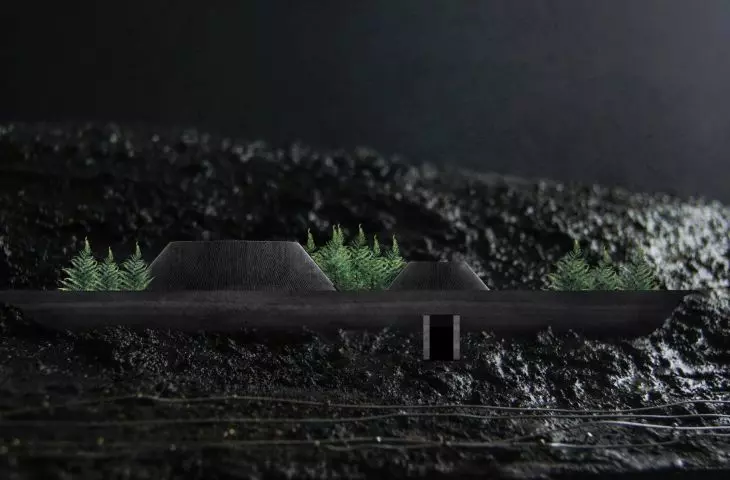Work submitted for the competition
"Best Diploma Architecture".
western Carpathian beech
The wanderer initially thinks he has arrived not where he was going. His old maps don't match the landscape he found. He is invited to explore the city while seeing old postcards showing it as it was in the past. They reflect the images from the maps - a natural land of the West Carpathian beech forest.
coal mines
The city was created entirely by human imagination. A man once found a substance here that allowed residents to have anything they wanted. They began to mine it on an industrial scale. The first mine was called "Emanuel's Blessing." New settlements, steel mills and railroads attracted even more people with dreams.
air pollution
Development was dynamic. It seemed that industry was creating new life. At first, only a few residents noticed that the sky was slowly changing color. It turned from intensely blue to gray. The difference was immediately noticed by visitors, who did not encounter such pollution in the places from which they came.
formation of heaps
The changes in the landscape were increasingly apparent. Soon the land, too, once full of life and covered with grass, became a black desert. The cleared forests turned into mountains created by the hand of man. Once even people with poor eyesight noticed the changes, no one knew how to reclaim the lost landscape.



site development plan
© Dobrochna Lata
degraded areas
Many years were longed for fertile land. Over time, people became accustomed to their new surroundings. In the end, few remembered what desires drove the founders to create the city. Only the oldest remembered what it was like before the industrialization of Upper Silesia.
return to nature
The inhabitants decided to enclose the fading old world in artificial mountains and basins. They wanted nature to be born again. They began to dream of a postcard city again. Residents discovered that much could be reclaimed from the black deserts. Great hopes began to be attached to the idea of great reclamation.
the road to change
Efforts were made to save the last bit of original forest. A trail was created, complete with elements of road architecture, linking two contexts: nature and the mine. The beginning of the trail was to be a platform of compacted ash to remind us of the mining past.



road to change
© Dobrochna Lata
reclamation center
The charred roofs of burnt wood slowly emerge from behind the artificial mountain. The path reaches a building whose function is to survey and restore the site. Lighting the building is provided by two inverted cones that act as pots to collect water for the trees in the lab's skylights. The path takes the form of a spiral staircase. It passes through the steepest side of the slope.



projection of the reclamation center
© Dobrochna Lata
museum of unnatural history
A ramp leads to the interior of the next building of the route, which slowly sinks into the terrain. The museum of unnatural history shows the path of formation, the combustion process and the effect of coal on the environment of matter. The entrance area alludes to mining and extraction and arouses the desire to explore. It ends in a large hall illuminated from above on a circular plan. A sheaf of light enters from a large covered cone through an overhead skylight. At the heart of the room is a garden of ferns and forbs - the primroses of coal.



museum of unnatural history
© Dobrochna Lata
circulation of matter
The interior refers to the formation of coal and the time before mining. From a bright room, it delves underground. It depicts the fate of substance from the Cambrian era. From the forest of ferns, through peat and anthracite, through its mining, to the pollution and ash created in the combustion process. Exploration of the region's genesis awakens environmental awareness.



circulation of matter
© Dobrochna Lata
amphitheater of reflection
A wanderer ponders nature. He observes the emerging vegetation against the backdrop of the forest. With new hope for nature's renewal, he ends his adventure in a surviving fragment of the West Carpathian beech forest.



reflection
© Dobrochna Lata
Dobrochna LATA
Illustrations: © Author

























